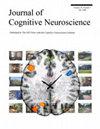The Brain's Sensitivity to Real-world Statistical Regularity Does Not Require Full Attention
IF 3.1
3区 医学
Q2 NEUROSCIENCES
引用次数: 0
Abstract
Predictive coding accounts of perception state that the brain generates perceptual predictions in the service of processing incoming sensory data. These predictions are hypothesized to be afforded by the brain's ability to internalize useful patterns, that is, statistical regularities, from the environment. We have previously argued that the N300 ERP component serves as an index of the brain's use of representations of (real-world) statistical regularities. However, we do not yet know whether overt attention is necessary in order for this process to engage. We addressed this question by presenting stimuli of either high or low real-world statistical regularity in terms of their representativeness (good/bad exemplars of natural scene categories) to participants who either fully attended the stimuli or were distracted by another task (attended/distracted conditions). Replicating past work, N300 responses were larger to bad than to good scene exemplars, and furthermore, we demonstrate minimal impacts of distraction on N300 effects. Thus, it seems that overtly focused attention is not required to maintain the brain's sensitivity to real-world statistical regularity. Furthermore, in an exploratory analysis, we showed that providing additional, artificial regularities, formed by altering the proportions of good and bad exemplars within blocks, further enhanced the N300 effect in both attended and distracted conditions, shedding light on the relationship between statistical regularities learned in the real world and those learned within the context of an experiment.大脑对现实世界统计规律性的敏感性并不需要全神贯注
关于感知的预测编码学说认为,大脑在处理输入的感官数据时会产生感知预测。这些预测被假设为大脑从环境中内化有用模式(即统计规律性)的能力所提供。我们之前曾提出,N300 ERP成分是大脑使用(现实世界)统计规律性表征的一个指标。然而,我们尚不清楚这一过程是否需要公开注意力的参与。为了解决这个问题,我们向完全注意刺激物或被其他任务分散注意力(注意/分散注意力条件)的参与者展示了现实世界统计规律性高或低的刺激物(自然场景类别的好/坏范例)。与过去的研究结果相同,N300 对坏场景示例的反应大于对好场景示例的反应,此外,我们还证明分心对 N300 效果的影响微乎其微。由此看来,要保持大脑对现实世界统计规律性的敏感性,并不需要明显集中的注意力。此外,我们还进行了一项探索性分析,结果表明,通过改变区块中好的和坏的示例的比例来提供额外的、人为的规律性,进一步增强了注意和分心条件下的 N300 效应,从而揭示了在真实世界中学到的统计规律性与在实验环境中学到的统计规律性之间的关系。
本文章由计算机程序翻译,如有差异,请以英文原文为准。
求助全文
约1分钟内获得全文
求助全文
来源期刊
CiteScore
5.30
自引率
3.10%
发文量
151
审稿时长
3-8 weeks
期刊介绍:
Journal of Cognitive Neuroscience investigates brain–behavior interaction and promotes lively interchange among the mind sciences.

 求助内容:
求助内容: 应助结果提醒方式:
应助结果提醒方式:


